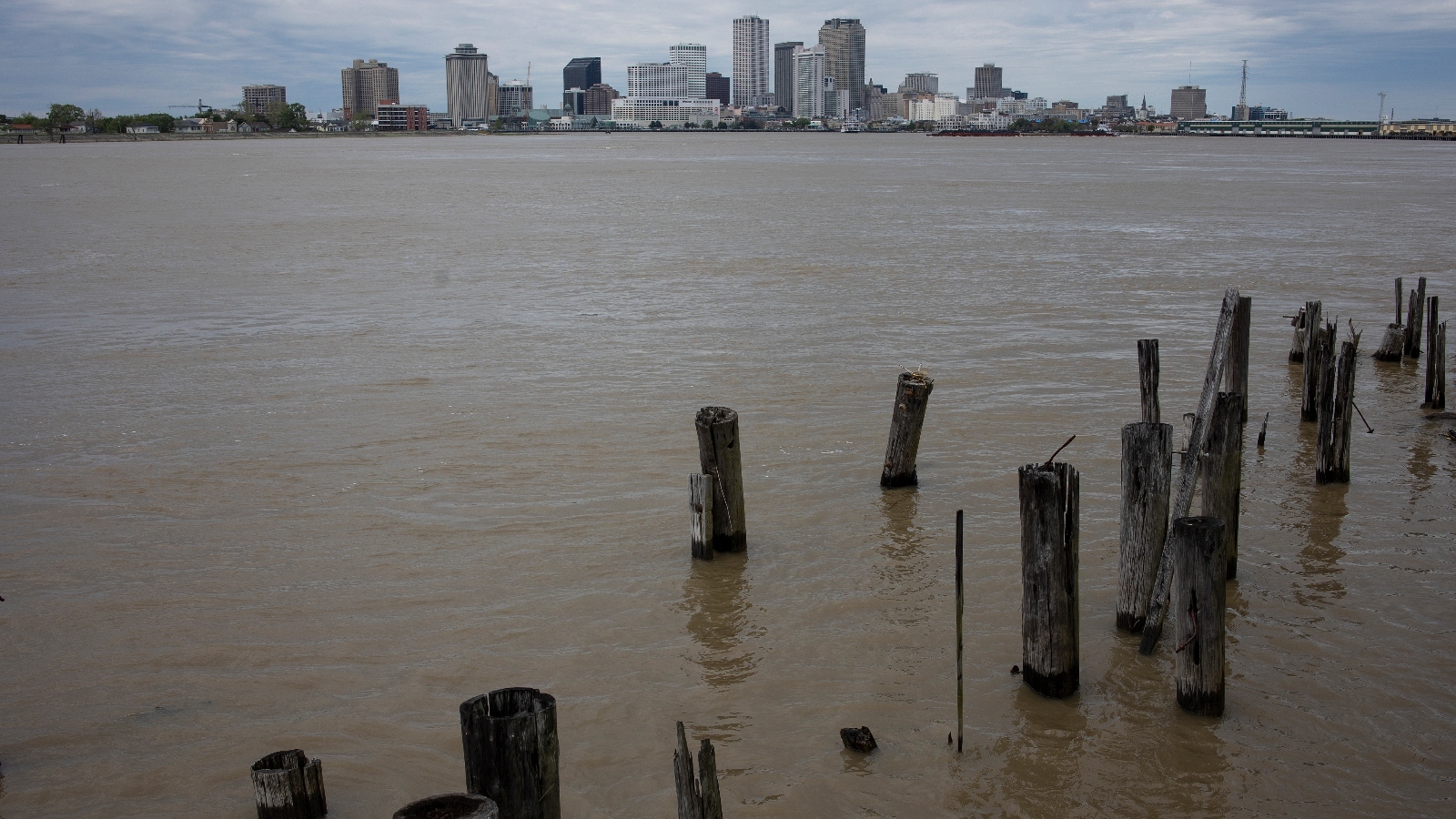Drought on the Mississippi River is pulling salt water toward New Orleans, threatening drinking water supplies.
The Mississippi River is a connected system. If farms dump fertilizer into the river’s tributaries in Ohio, that waste ends up in the Gulf of Mexico. If heavy rains make the river’s level rise in Illinois, it puts pressure on flood levees in Arkansas.
And if a hot, dry summer sweeps across the Midwest, drying the river out for hundreds of miles downstream, something very strange happens in southern Louisiana.
For the past month, as the water level on the lower Mississippi River sinks lower amid an extreme drought stretching from Nebraska to Ohio, a mass of salt water has been pushing upriver from the Gulf of Mexico toward New Orleans, filling the space where fresh water should be. Salt water is heavier than fresh water, so the water forms the shape of a wedge pressing against the bottom of the river. The wedge has already slithered more than 50 miles upstream, passing several small communities in rural Plaquemines Parish, and experts say it will likely reach New Orleans by the end of the month. Even as local and federal officials rush to slow down the wedge, they’re finding themselves powerless against the laws of nature.
The wedge poses a serious threat to the drinking water supply in communities along the river. Salt water has already begun to contaminate local water systems in the towns of Port Sulphur and Pointe à la Hache, and by the end of next week it will likely reach suburban Belle Chasse, home to around 10,000 people. Rural communities in lower Plaquemines Parish have been drinking bottled water and showering in salty tap water for multiple weeks, and it was only this week that officials installed reverse-osmosis filters at the parish’s treatment plant to remove salt from the local water supply.
read more: https://grist.org/drought/louisiana-new-orleans-salt-water-wedge-mississippi-river-army-corps/
archive: https://archive.ph/b1Bc9
And they still vote for the party that claims that global warming is a hoax…
deleted by creator
I am curious as to why they don’t try to create a canal/dam to force water to flow one way. Even if they have to pump tons of water, it seems like a better solution than simply watching things get worse.


